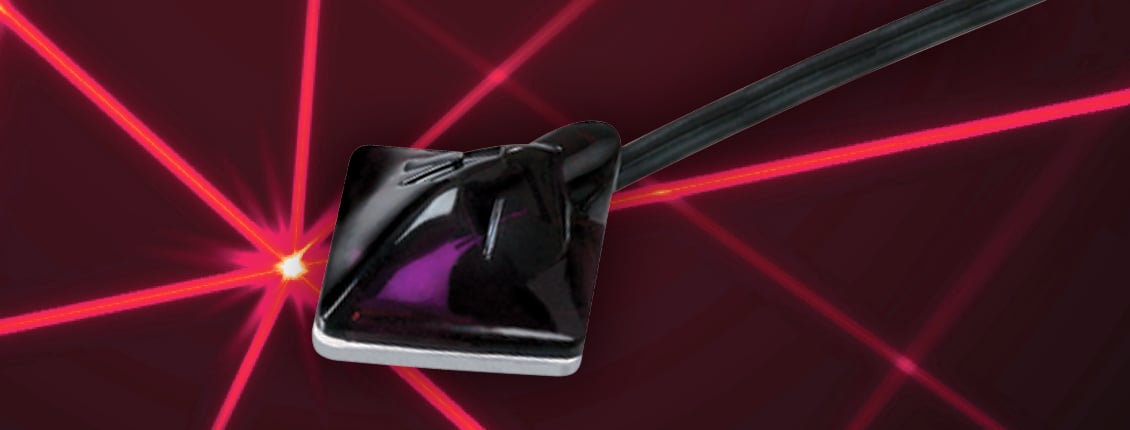
Solving remote conundrums
Updated September 27, 2019: Infrared technology has many applications in the modern world and chances are, you’ve used this technology most of your life. Xantech is one of the leading names in IR solutions, dealing mainly with the remote control of home electronics. Xantech provides installers and users with the hardware that they need to take control of any infrared-capable A/V or CFL-lighting setup. Infrared control has come a long way since it became the industry standard for wireless television remotes in the early 1980s, so let’s take a look at what’s changed.
First, What is Infrared Radiation?
Don’t let the “radiation” part of the name fool you. Infrared radiation is safe, unlike ultraviolet radiation. It can be emitted from sunlight and even from humans in the form of heat. Infrared light is in the invisible portion of the electromagnetic spectrum. It is a somewhat longer wavelength than red light, which makes it unseen by the human eye.
Back to the Basics: The Remote-Control System
In order to understand the benefits of Xantech’s IR products, it is important to understand the basics of infrared technology. Specifically, how IR remote controls and infrared radiation work together.
In every remote-control system, there has to be a transmitter and receiver. The transmitter (example: a television remote) sends a signal and the receiver (often located on the front of a device) accepts and interprets the signals from the transmitter. On the transmitter, there is a light-emitting diode, otherwise known as an LED, that produces infrared light signals. The receiver contains a photo diode that takes in the infrared light signals and interprets them through the device’s microprocessor to turn the signals into outputs. Resulting actions include turning up the volume, changing the channel, turning the power on or off, etc.
Xantech’s IR emitters and receivers offer a solid reception between devices that allows for endless control from just one remote.
A transmitter with an LED sends infrared signals to a receiver using patterns of flashing IR light. Think of it as Morse code. The transmitter’s LED flashes very quickly, making patterns of small, fast flashes of light. The photo diode picks these up and the microprocessor is able to decode the pattern of light. The microprocessor then tells the device to perform the desired action. Xantech has engineered a way for one transmitter (remote) to communicate with several different A/V and lighting components by having one central receiver that takes those IR inputs and then distributes them to a number of IR transmitters that communicate with each component.
Xantech range solutions
In early IR applications, there had to be a clear line of sight between the transmitter and receiver. If there was not, the light signal would be incomplete or lost altogether. Xantech has spent years honing its IR technology to provide better versatility and usability. The range of the transmitters and receivers depends upon the strength of the signal coming from the transmitter. The size of the photo diode receiving the signal also affects the range. If the transmitter has multiple LEDs or a particularly strong LED then there will be a more powerful signal. There was an estimated 30-feet of clear-sight range for early IR devices.
With Xantech’s Dinky Link 85/Green and 95/Red Series IR Receiver Kits, users can decide what distance is ideal for them. Either way, it’s a lot more than 30 feet!
The 85/Green Series receivers offer up to 80 feet of range with standard A/V remotes. These are best for living rooms, family rooms, master bedrooms, and anywhere in the general area of the A/V system that is being controlled.
The 95/Red Series receivers allow up to 120-foot range. These are ideal for use in large rooms, large family or kitchen areas, conference rooms, and classrooms. So the Red Series is good for anywhere that requires superior performance and extended range.
Both series allow for control over nearly any A/V system like TVs, stereo systems, DVD players, and even CFL lighting.
Xantech customization options
Xantech not only offers solutions for different ranges of receivers but also mounting locations and colors. This offers your customers the maximum amount of customizability for their setup.
Options include:
- In-ceiling mounted peephole-style Micro Link IR Receiver Kits for lighting or projectors
- Surface-mount Dinky Link Kits for mounting on the top/bottom of TVs with black, silver, and white color options
- Designer Blink Emitters are an accessory that connects to a Xantech Connecting Block via a 3.5mm mono cable or to the Dinky Link IR Receivers. Blink Emitters then send signals to various A/V components to provide interconnectivity in a multi-unit A/V system—even if the system is in a cabinet or out of sight on a shelf.
- Connecting blocks act as splitters and have the ability to send signals to multiple Blink Emitters
Connecting the Dots
IR technology has grown immensely since its introduction into the consumer electronics industry. Xantech is a prime example of what that growth looks like. Xantech offers IR solutions that give customers superior performance, interconnectivity, and reliability that can be lacking in other connectivity and remote-control products.
Help your customers take control of their electronics and lighting with Xantech by visiting petra.com.
